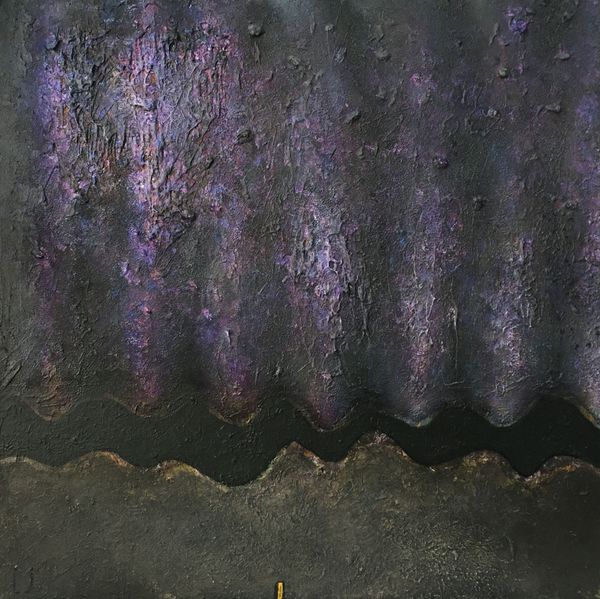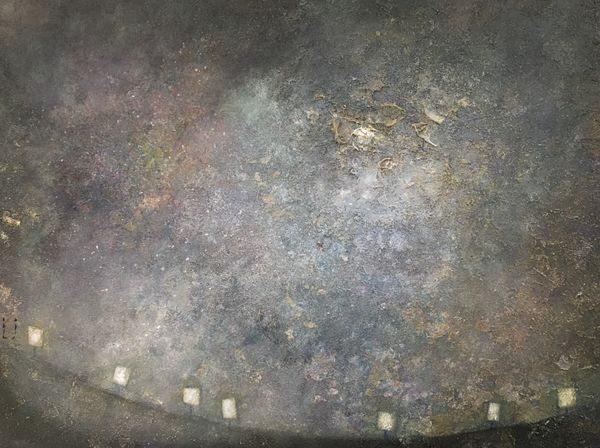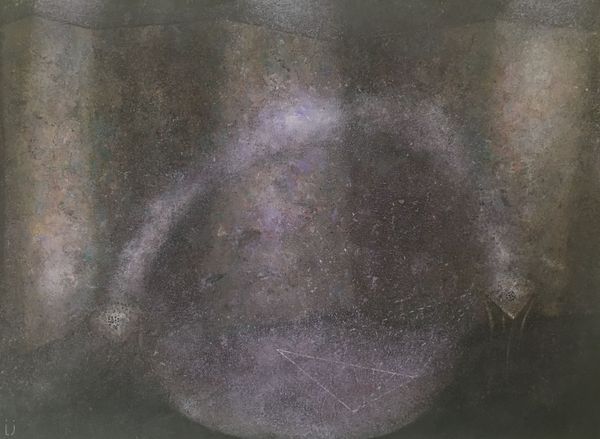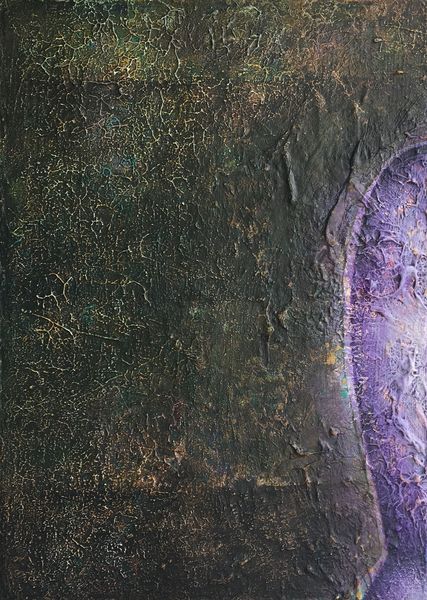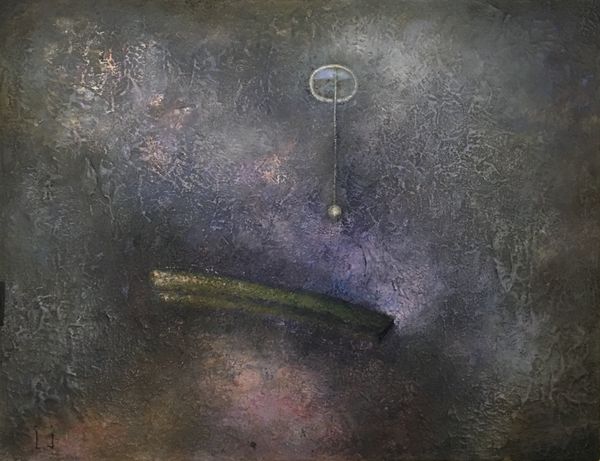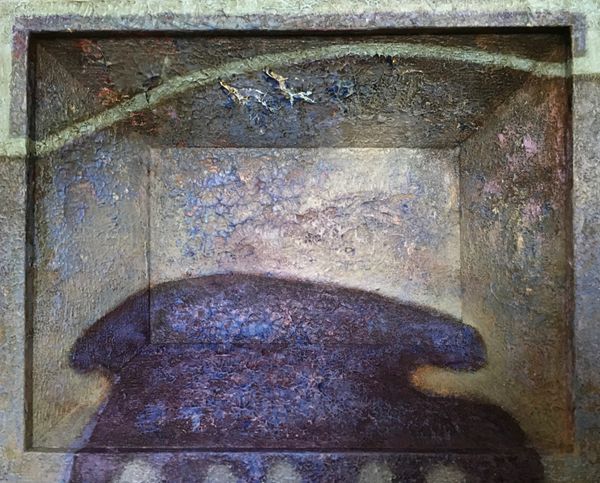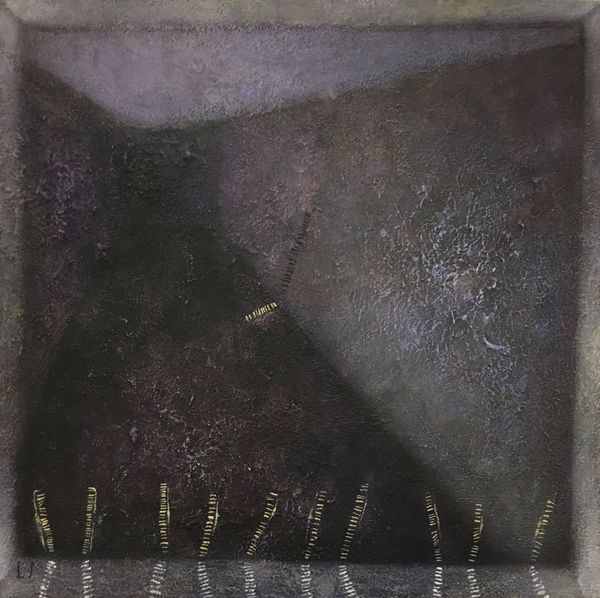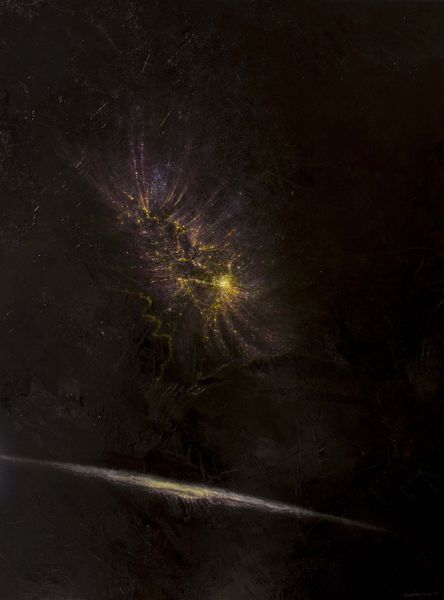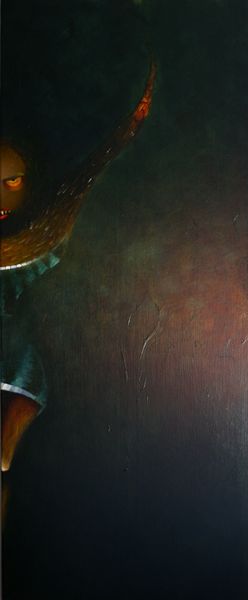
Dimensions: 41 x 72 cm
Copyright: Lech Jankowski,Fair Use
Curator: Lech Jankowski's "Una tromba per ascoltare il viola," created in 2019, offers us a complex interaction of materiality and abstraction through its matter-painting approach. The acrylic paint and impasto layers provide significant tactile dimension. Editor: The initial impression is overwhelming: it looks like an unsettling night sky or a dark cave, lit only by violet and the singular vertical protrusion. It makes me feel...disquieted. Curator: Yes, that disquiet likely arises from Jankowski's strategic use of monochrome, the varying densities of the acrylic and the sculptural nature achieved through the impasto technique. Notice how this all contributes to a visually dense surface. Editor: It is hard not to connect this density, particularly that textural form that looks like a trumpet, to broader discussions around auditory experience and the politics of listening. Is the “trumpet” an invitation or an accusation? Does its positioning suggest agency? Is it about forced listening or intentional, collective listening in community? Curator: An interesting take. I'd argue the title, translating to "A trumpet to listen to violet", focuses us more on synesthesia and how materials convey this experience. I wonder if Jankowski aimed to question art’s reliance on sight by prioritizing the act of auditory perception via color. Editor: I find synesthesia always has an inherently political valence in its queering of rigidly imposed regimes of order. It's also worth examining if, or how, Jankowski engaged the lineage of Eastern European artists exploring socialist themes in abstract form. Abstraction never exists in a vacuum, even if it uses one material! Curator: Right, especially when material itself becomes the message, defying prescribed classist standards of beauty, value and technique. We have to consider his choices of matte paint vs sheen paint. The amount of paint utilized and its cost. His intent behind those artistic decisions also weighs in heavily. Editor: Exactly. It becomes a dialectical engagement. Looking at the work again, its refusal to resolve, or remain within neat formalist categories, remains potent. What do you make of that subtle touch of blue on the lower right? Curator: Perhaps a slight disruption to draw your gaze there and push your experience to new heights of sensorial interaction, opening up space in the field of material possibilities that we've only touched upon here today. Editor: Yes, even after all of this it still offers something new to unravel within its layered meanings, doesn't it?
Comments
No comments
Be the first to comment and join the conversation on the ultimate creative platform.
